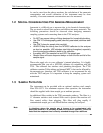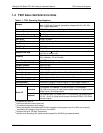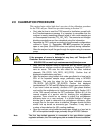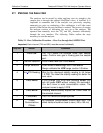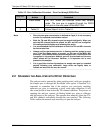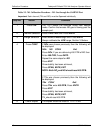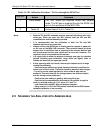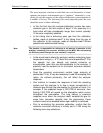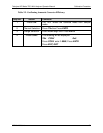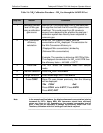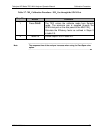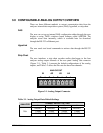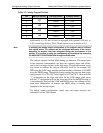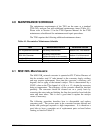
Calibration Procedure Teledyne API Model T201 NH
3
Analyzer Operator Manual
20 07271B DCN6646
The most important criterion an individual can avail themselves of when
spanning an analyzer with
ammonia gas is “patience”. Ammonia is a very
sticky gas and the response of the analyzer/calibration system depends on
a number of factors. The following lists some important points the user
should be aware of when calibrating:
Is this the first time the analyzer/calibration system has seen
ammonia gas in the last couple of days? If so, spanning to a
fixed value will take considerably longer than normal: possibly
12 hours to completely stabilize.
Is the tubing that is delivering span gas from the calibration
bottles, made of stainless steel? Is the tubing from the rear of
the calibrator to the analyzer, made of stainless steel? Where
possible use stainless steel tubing.
Note
The operator is responsible for delivering a set amount of
ammonia to the
analyzer, calculating the converter efficiency of the M501 NH
3
and entering
the efficiency value through the user interface, if required.
Is the environment where the analyzer resides undergoing large
temperature swings (+/- 5
o
C about the norm temperature)? If so
the sample line can absorb and desorb
ammonia at
concentration rates that are distinguishable to the analyzer. If
possible, heat the sample line to a constant maximum ambient
temperature.
Does the sampling environment contain large amounts of
particulates? If so, it may be necessary to add the sampling filter
option. As outlined previously, this will affect the analyzer
response.
One method to increase the response of both the sampling
system and the analyzer is to flow a larger concentration of
ammonia gas through the pneumatics for a couple of hours. For
example, if the expected range is 500 PPB of ammonia, then
flowing 1000 PPB will speed up the absorption which occurs
throughout the pneumatics. The long delays in
ammonia
response occur when the analyzer hasn’t sampled the gas for
some time. Ammonia desorbs from the pneumatics, these
surfaces need to be rewetted before span stability is achieved.
Prior to conducting the ammonia calibration, confirm that the
ammonia converter efficiency is initially set to 1.000 using the
following menu key selections:



